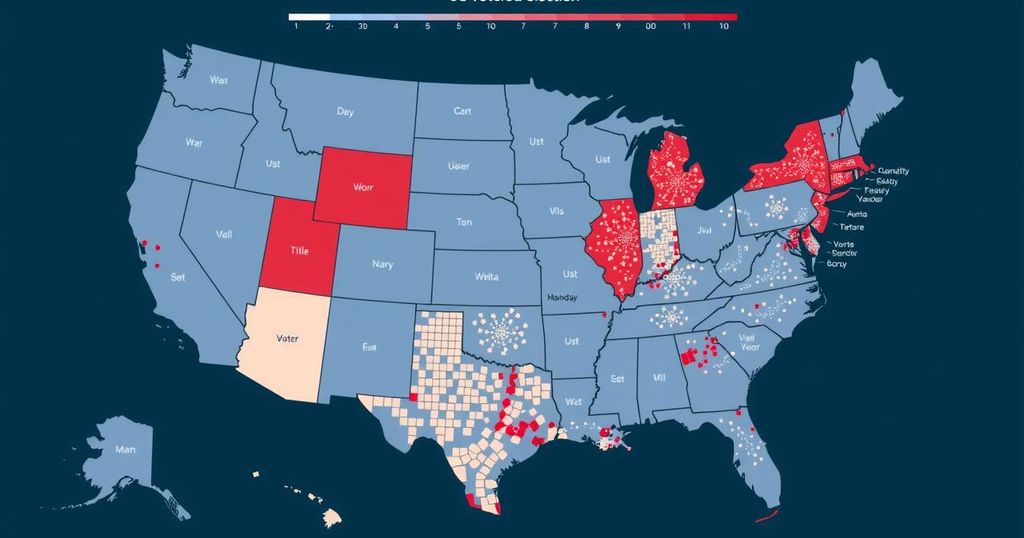The Historical Voting Trends of America’s Key Swing States
The article examines the voting history of seven crucial swing states—Arizona, Georgia, Michigan, North Carolina, Nevada, Pennsylvania, and Wisconsin—that play a significant role in U.S. elections. These states have historically favored Republican candidates but have recently shown shifts towards the Democratic Party, particularly in 2020. As both parties vie for electoral dominance, understanding these shifts is critical in predicting future outcomes in the upcoming elections.
The seven pivotal swing states in the United States—Arizona, Georgia, Michigan, North Carolina, Nevada, Pennsylvania, and Wisconsin—are critical in determining the outcomes of presidential elections due to their historical voting patterns. Traditionally leaning towards Republican candidates, these states have exhibited fluctuations in their political allegiances, particularly in recent elections. Notably, the 2020 election marked a significant shift for several of these states, as they swung towards the Democratic Party, showcasing the changing electorate dynamics. With the current electoral battle intensifying, these states continue to remain the focal points for both major political parties as they seek to capture the all-important Electoral College votes necessary for victory.
Understanding the historical voting behaviors of the swing states is crucial, as they often function as a barometer for national electoral trends. These states are characterized by their mixed political affiliations, with neither major political party consistently dominating the vote. Swing states are critical because they are often the deciding factors in close elections due to their unpredictable nature. Analyzing past voting patterns provides insights into potential voter behavior in upcoming elections, especially when high-stakes races bring new electoral dynamics to light.
The electoral significance of these swing states cannot be overstated, as they are essential battlegrounds for both the Democratic and Republican parties. Historical voting trends indicate that while some of these states have shifted their political loyalties over time, they remain keenly contested territory. As political campaigns intensify, understanding the nuances of voter demographics and preferences in these states will be pivotal in forecasting the outcome of future elections. The electoral map continues to evolve, making it imperative for candidates to engage actively with the voters in these crucial areas.
Original Source: www.aljazeera.com




Post Comment